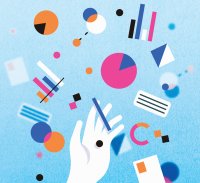3 Tips to Use Data Effectively
Limit the amount of data collected and used to maximize the benefits for students.
Your content has been saved!
Go to My Saved Content.Data has the potential to be the key lever that leads to exceptional results for kids. In a world where there are endless metrics—expanding spreadsheets, charts, report cards, and data points—many educators feel simultaneously bombarded with data points and lacking the data they need. With the innumerable amounts of data points, we need to decipher what data points are meaningful and avoid using them in a haphazard and unscientific way.
Using data with fidelity means approaching the data with an open mind rather than presuppositions about students or programs.
Consider Limits
Limit the amount of data that you’re processing on a consistent basis. Simply put, if everything is important, nothing is important. Determine what data is most important. Within the classroom we have discipline data, achievement data, attendance data, social-emotional data, and parent data. Begin by asking what information plays a role in your daily practice. If attendance data is stagnant and plays little to no role in changing your practices, don’t give as much time to gathering or analyzing it. Part of selecting what data to use involves determining what data to intentionally omit. Assess if information is necessary to change your practices, and stop collecting data you don’t need.
With any assessment system, many data points are provided for each student. In my school, every staff member gives a formal, standardized assessment five times per year, at minimum, to all students. Each assessment yields approximately 20 possible reports. With that much information, it can be overwhelming to know what information is most useful. Look for data that can be standardized across classes or grades.
We choose to look only at the current percentile rank of each student and the change in their percentile rank. This level of data ensures that everyone is using the same language and assessing information on the same basis.
Collect data that is useful not only for teachers, but also for students. Our students set goals to increase their rank, and we track how many students perform. Students as young as 7 years old understand how to read their reports, see their progress, and set a goal.
Make It Collaborative
Data and statistics are not synonymous terms. Data is simply information; statistics is a way of analyzing, interpreting, and presenting information. Disassociating data from statistics can allow all educators to build confidence in working with data.
Some educators may be hesitant about the time involved with data assessment. Create streamlined systems where data can be entered efficiently or automatically, and establish a clear mission and plan for how the data will be used.
In our school, teachers determined that they wanted at least 70 percent of students to improve math proficiency on the standardized assessment. Teachers decided to give a preassessment before beginning the math units. Using data from the preassessment, they identified what major skills needed to be addressed, and they created plans for achieving those objectives. We also used midpoint checks to assess progress.
After the team agrees on what data is important and why, collaboratively script questions to ask about the data, such as:
- Where are our students currently performing?
- In what area have we shown the most improvement? What strategies seemed to work the best?
- Are there any common themes about students who struggled/excelled?
- What teaching practices show improvement in the data?
Set goals as a team for the growth expected by the next checkpoint. Use those goals to drive the conversation about how to get to the next checkpoint. We meet regularly to review, modify, and adjust our strategies based on the data. At our last faculty meeting, we talked about the weight of knowledge. Charting and tracking students’ growth and achievement helps identify the gap between current performance and our goals for our students. Once we have knowledge of the gap, we can bridge it using specific strategies. After we began using data in this way, our students saw significant improvement: 84 percent of our students increased their achievement over the first semester by an average of 17 percentile points.
Stay Flexible
Data can enhance collaboration, but using data on a team requires a level of vulnerability. Someone’s data ultimately is going to be better than someone else's, but instead of a competitive lens, approach data with the perspective that it could enhance collaboration. Every set of results is an opportunity to improve our practices. View data as an opportunity to be embraced as a way to move toward growth.
When we look at data from summative assessments, it is often autopsy data about how the unit performed. As we reflect on data, look for opportunities to take immediate action on the information we’ve gathered. I ask this question a lot: What data do I need from students today to change what I might do tomorrow? Every lesson provides information about student learning and the opportunity to adjust.
